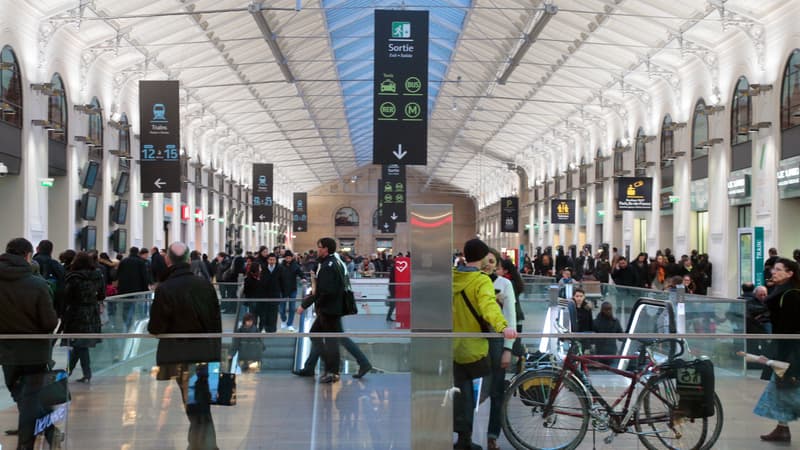Large distribution brands are dedicated to fierce competition in transit places, stations or service stations, where they are in direct contact with captive and pressed consumers, who move away from their most distant department stores.
Foreign tourists anticipating their picnic from the south, students tempted by a sugar factory … the crossroads of the crossroads in the basement of the Saint-Lazare station in Paris see customers this morning of the week. A store on the daily trip, “is practical,” synthesizes Thierry when swallowing a sandwich, on the way to the office.
For distributors, it is very profitable: this small 400 m² store achieves 10 million euros in annual billing (the equivalent of an average supermarket of more than 1000 m²), an even more enviable performance since these small areas use little personal are often operated by a franchisee partner, which supports most operating costs.
“Simplify the life of travelers”
Carrefour turned the franchise into a pillar of its strategy and its proximity director in France, Benoît Soury, had warned in the summer of 2024 that the distributor was going to point to “the flow areas”, “as our recent locations in the SNC stations of Lyon Part-Dieu and Ratp in the halls”, in the heart of Paris. In recent weeks, Carrefour has won two calls for tenders: an agreement with the distribution branch in the transport places (travel retailer) of the Lagardère group and the SNCF to deploy 150 points of sale by 2030 in stations of all sizes; Then it was with Commerce Altarea and Ratp Travel Retail that “overcame”, this time to open local stores and services in 45 Grand Paris Express stations.
“The idea is to simplify the life of travelers”, but also “residents who will find their sandwiches, their careers before going home” or “before leaving for their holidays,” said Marlène Dolveck, general director of SNCF Gares & Connexions and deputy managing director of the SNCF group, in charge of the transformation, during a press point at the end of January Saint-Lazare. The example had received online customer purchases before taking the train that leads them to ski and find them in a locker at the destination station. They would only have to put them in the trunk of their rental car, without having to go through the major altitude.
In an urban environment, the restriction of automotive displacement is added, parking problems … “If people no longer go to the store, it is necessary to position themselves in forced flows and, in particular, near public transport,” he continues.
Casino present in more than 1,300 service stations
In mid -February, Casino had announced the renewal of its association with Avia France to offer its product ranges in certain service stations in eastern France. An association that covers 46 highways, including 39 under the Casino Express brand, and 41 urban or peri -urban stations, including 11 under the Casino Express brand.
Casino, also a partner of ENI or Totalenergies, said he was “present in more than 1,300 service stations in France.” If this time goes to a car flow, these locations are the most strategic: competition is low, consumers do not have an immediate alternative and the supply is very easy since the stations are found as close as possible to the truck transit axes, on the supermarket road.
Source: BFM TV


